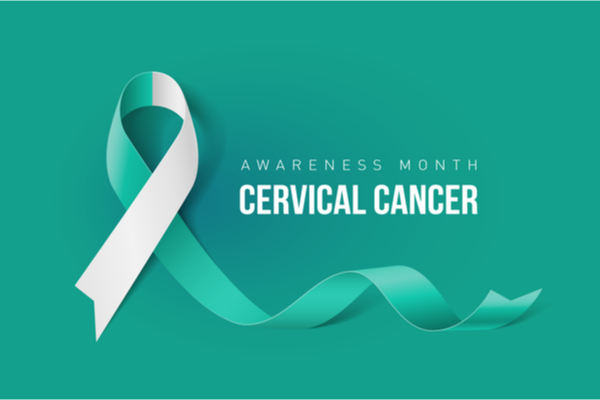January is Cervical Cancer Awareness Month. Cervical Cancer was once a leading cause of cancer death for women in the United States. Today, screening and prevention have greatly reduced the impact of this form of cancer. Still, nearly 14,500 women in the United States received a diagnosis of cervical cancer and more than 4,200 died from the disease last year, according to the National Cancer Institute.
What is Cervical Cancer?
Cervical cancer is a disease in which cancer cells arise in the cervix, which connects the uterus to the vagina, and it’s among a number of cancers that can be caused by infections with pathogens – bacteria, viruses, and parasites. The virus that is almost always the cause of Cervical Cancer is the Human papillomavirus, commonly known as HPV. HPV is currently the most common STI. There were about 43 million HPV infections in 2018, many among people in their late teens and early 20s.
How do you get HPV?
You can get HPV by having vaginal, anal, or oral sex with someone who has the virus, but it’s most commonly spread during vaginal or anal sex. It also spreads through close skin-to-skin touching during sex. A person (often male) with HPV can pass the infection to someone even when they have no signs or symptoms. If you’re sexually active, you can get HPV, even if you have had sex with only one person. You also can develop symptoms years after having sex with someone who has the infection. This makes it hard to know when you first got it. In most cases (9 out of 10), HPV goes away on its own within two years without health problems. But when HPV does not go away, it can cause health problems like genital warts and… Cervical Cancer.
How can you avoid getting HPV?
Get screened for cervical cancer. Routine screening at your annual Gynecological exam for women aged 21 to 65 years old can prevent cervical cancer. Pap test screening, a procedure during which cells are collected from the surface of the cervix and examined. The Pap test can both detect cancer at an early stage, when treatment outcomes tend to be better, and detect precancerous abnormalities, which can then be treated to prevent them from developing into cancers.
If you are sexually active, take precautions.
- Use condoms the right way every time you have sex. This can lower your chances of getting HPV. But HPV can infect areas the condom does not cover. So, condoms may not fully protect against getting HPV; and
- Be in a mutually monogamous relationship – or have sex only with someone who only has sex with you. At any age, having a new sex partner is a risk factor for getting a new HPV infection. People who are already in a long-term, mutually monogamous relationship are not likely to get a new HPV infection.
Get vaccinated. The HPV vaccine is safe and effective. It can protect against diseases (including cancers) caused by HPV when given in the recommended age groups. The U.S. Food and Drug Administration (FDA) has approved three vaccines – Gardasil, Gardasil 9, and Cervarix – that prevent infection with certain subtypes of HPV including 16 and 18, two high-risk HPVs that cause some 70 percent of cervical cancers. But there is a lack of public awareness and adherence to vaccination programs in the U.S. The Centers for Disease Control and Prevention (CDC) recommends HPV vaccination for:
- All preteens (including boys and girls) at age 11 or 12 years (or can start at age 9 years).
- Everyone through age 26 years, if not vaccinated already.
In a study published in Cancer Epidemiology, Biomarkers & Prevention, a journal of the American Association for Cancer Research (AACR), researchers investigated the types of HPV infections in 12,514 women aged 15 to 45 and found that the seven subtypes of the virus targeted by Gardasil 9 accounted for about 91 percent of the most advanced cervical precancers, meaning that Gardasil 9 could prevent nine out of 10 cases of cervical cancer. “If vaccination programs with this new-generation vaccine are effectively implemented, approximately 90 percent of invasive cervical cancer cases worldwide could be prevented, in addition to the majority of precancerous lesions,” said senior author Elmar A. Joura, MD, an associate professor of gynecology at the Medical University of Vienna in Austria.
A 2015 article in Cancer Epidemiology, Biomarkers & Prevention reported on a national survey that found many pediatricians and primary care physicians communicate about HPV vaccination in ways that may discourage parents from getting their children vaccinated. “We are currently missing many opportunities to protect today’s young people from future HPV-related cancers,” said Melissa B. Gilkey, PhD, the article’s lead author and an assistant professor of population medicine at Harvard Medical School and Harvard Pilgrim Health Care Institute in Boston.
Usually, cervical cancer develops slowly over time. Increasing screening, vaccination and prevention are key components of the effort to eradicate cervical cancer.
—
Photo Credit: Duda Vasilii / Shutterstock.com
